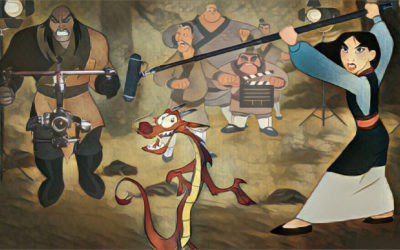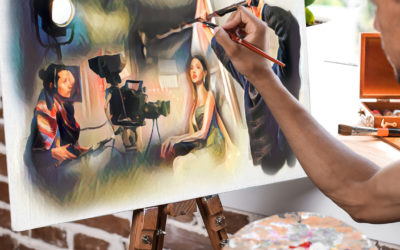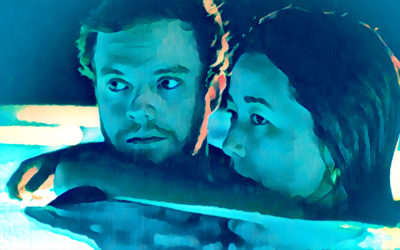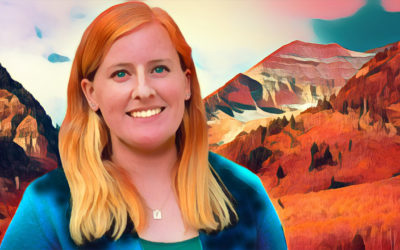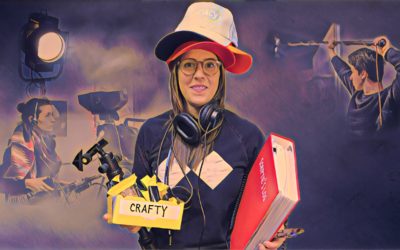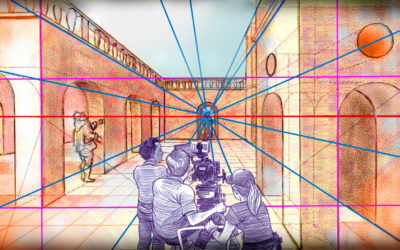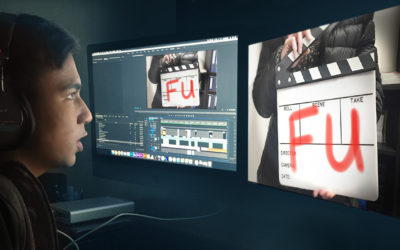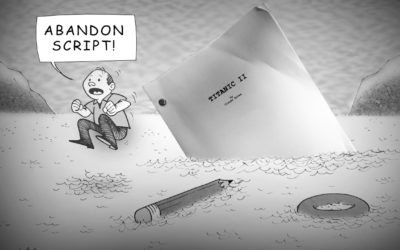FEATURED POST
TAX PREP FOR FREELANCE FILMMAKERS: What Is a Loan-Out Company and Do I Need One?
DISCLAIMER: This article does not serve as legal advice. We highly recommend working with your CPA to figure out what is best for your situation. My name is Derek Sepe, and as a freelance production sound mixer, I have my own small business LLC or “Loan-Out” that I...
Read MoreRECENT POSTS
FINDING THE STORY: How Narrative Filmmaker Tamar Halpern Directed Her First Documentary
About Tamar Halpern Tamar Halpern is a writer and director with 9 feature films behind her — all low-budget and produced for less than $1.2 million. She graduated from the USC School of Cinematic Arts with an MFA in 1998, the same year she started filming what...
WHAT’S YOUR CONTINGENCY PLAN? 5 Ways To Catch Budget-Busting Line Items
A film budget can be a moving target to say the least, and honing in on an accurate number before cameras roll is essential to a successful production. Just about everyone at one point in their career is tempted to trim their budget too low, and it is...
PLUS ONER: How the PLUS ONE Team Gets It All in One Shot
In this followup to our last conversation with the team behind Plus One, we get an in-depth account of the logistical planning and choreography that goes into the oner—a technically challenging but stylistically exciting bit of blocking and camera work....
PUBLIC RELATIONS OVERVIEW: Five Tips for Assembling Your EPK
Your film has a story! Where it came from, why it matters, or who came up with it in the first place (while stranded in a Maryland blizzard, for instance). Public Relations is the art of telling that story, through source material, documentation, and...
RENAISSANCE DISNEY: 5 Filmmaking Lessons from Disney’s Mulan
The term “Renaissance” has been used by fans to describe the awakening and reinvention that brought public and critical interest to Disney Feature Animation in the 1990’s, starting with 1989’s The Little Mermaid and ending with 1999’s Tarzan. No matter...
MAKE PEACE WITH UNCERTAINTY: Craig Johnson on Life as a Director
Directing requires serious people skills! In this follow-up to Stu Pollard's interview with Craig Johnson — writer and director of the Netflix movie Alex Strangelove — we dig into the more intangible aspects of directing. The first part of this...
WRITE LIKE A PRO: How Our Screenwriting Experts Overcome Common Hangups
There are times when writing can be exciting, effortless, and fun. And then there are all the other times: when you don’t know where to start, or can’t remember why you started, or when you’re buried so deep you don’t even know which way to dig to get yourself...
THE CUT, THE PACE, AND THE SCORE: Editor Melissa Kent on Finding a Film’s Sound
About Melissa Kent Melissa Kent’s diverse artistic background took her from dancing to design to a TV internship. She gave us some great advice back in 2018 about starting and building an editing career. Today she generously dispenses hands-on,...
THE MOVING MASTER: Shooting Coverage With Efficiency and Style
Wide establishing shot… Medium two-shot… OTS single… Reverse… Reverse… Reverse… Punch in for a dramatic close-up… Sound familiar? It’s how most film and television scenes are shot and edited. Sure, it’s a little boring, but it works. And if you have...
MORALE ON SET: A Director’s Guide to a Happy Production
As a director, it’s your job to not only carry the artistic vision of your film, but also take care of your people. Of course, you have a producer and an AD who are also looking out for crew safety and logistical efficiency. But in day to day set life,...
THE ARTIST’S WAY FOR FILMMAKERS: Revisiting the Maintenance Methods of Creativity
Whose creative life hasn’t been supercharged, validated and otherwise improved by Julia Cameron’s bestselling book, The Artist’s Way? If you haven’t yet had your world rearranged by this 12-week study of artistic inspiration and productivity, make like...
FAILING FORWARD: How PLUS ONE fell apart and came together again
Two friends, a summer of weddings, and the indie rom-com that follows their story. This is Plus One, the breakout 2019 Tribeca Film Festival winner that was sold before it even premiered and is now streaming on Hulu. Lunacy Productions recently caught...
THE ‘WRITE’ PITCH: 5 Reasons to Pitch Your Work-in-Progress
If you’re having trouble finishing your script, here’s a wild idea: start pitching it! What? Now? That’s bonkers! Everyone knows you have to have a completed script before it’s ready to pitch. But... What if you were to make pitching a part of your...
TALES FROM THE SUNDANCE LAB: An introverted sound mixer finds love on the mountain
Alexandra Reinnoldt is a producer and sound technician for Lunacy Productions. This year she was invited to be a crew member at the Sundance Directors Lab, an annual retreat designed to support promising young filmmakers as they workshop their first feature films....
IT’S HARD TO MAKE MOVIES! Director Craig Johnson Discusses His First Two Films
About Craig Johnson Craig Johnson is an award-winning writer/director best known for 2014’s The Skeletons Twins, starring Bill Hader and Kristen Wiig. His latest project, Alex Strangelove is a Netflix original movie, available now. Lunacy’s own Stu...
GREATEST HITS
LOW-BUDGET FILMMAKING: How Much Does It Really Cost To Make Your First Feature?
Fellow indie filmmakers continue making micro-budget feature films. Glen Schultz (Red Trail 90) says he did it with $10,000. Mark Duplass (The Puffy Chair) suggests you only need $1,000. Those figures notwithstanding, keeping costs low can set you up to turn a...
RENAISSANCE DISNEY: 5 Filmmaking Lessons from Disney’s Mulan
The term “Renaissance” has been used by fans to describe the awakening and reinvention that brought public and critical interest to Disney Feature Animation in the 1990’s, starting with 1989’s The Little Mermaid and ending with 1999’s Tarzan. No matter...
Z-AXIS MOVEMENT: 5 camera techniques to help you raise stakes, create unease, and more
There are three directions you can move your camera: along the horizontal x-axis (pans and dollies), the vertical y-axis (tilts and booms), and the z-axis (moving forward or back). Used separately or in conjunction, these movements can serve utilitarian purposes,...
BETTER SLATE THAN NEVER: The Importance Of The Slate To An Assistant Editor
“Rushing Ramona” is a 2nd AC (camera assistant) working on a feature in Kentucky. Before each take she updates the slate (also called clapboard, clapperboard, or sound marker) with the appropriate scene and take. She announces the take, claps the “sticks,” and gets...
WOMEN ON THE CUTTING EDGE: 5 Female Film Editors Behind Your Favorite Films
In honor of Women’s History Month your friends at Lunacy will be posting content celebrating the contribution of women to the film industry. We continue this week with a look at female filmmakers who aren't household names but have nonetheless shaped the history of...






